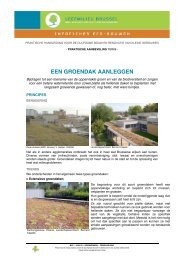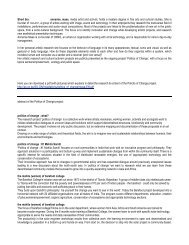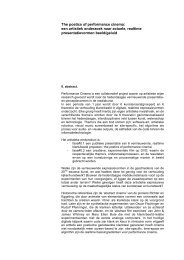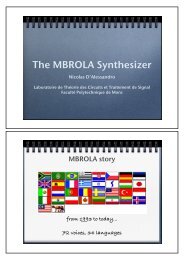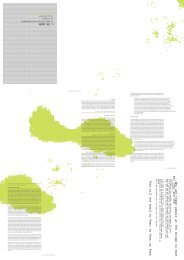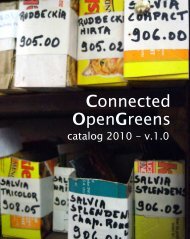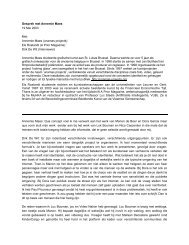MANIFESTO
MANIFESTO
MANIFESTO
You also want an ePaper? Increase the reach of your titles
YUMPU automatically turns print PDFs into web optimized ePapers that Google loves.
Industrial agriculture contributes directly to climate change through emissions of<br />
the major greenhouse gases - Carbon dioxide (CO 2 ), methane (CH4), and nitrous<br />
oxide (N2O). Carbon dioxide emissions are largely caused by the loss of soil carbon<br />
to the atmosphere (land use change – forestry sector) and the energy intensive<br />
production of fertilizers (industrial sector). Modern industrial agriculture contributes<br />
to this by practices such as drainage of wetlands, deep plowing that exposes the<br />
soil to the elements, use of heavy machinery that compacts the soil, overgrazing<br />
that leads to desertification, and the practice of growing large-scale monocrops.<br />
Methane and nitrous oxide are particularly powerful contributors to climate<br />
change as the global warming potential of methane is 21 times, and of nitrous<br />
oxide 310 times, that of CO 2 . Since 1970 the emission of these greenhouse gases<br />
has increased by 40 percent and 50 percent respectively. 1<br />
According to the 2007 IPCC Report, nitrogen fertilizers account for 38 percent,<br />
the largest single source of emissions from agriculture. Chemically fertilized<br />
soils release high levels of nitrous oxide because they increase the concentration<br />
of easily available mineral nitrogen in soils. In particular ruminants produce<br />
methane via enteric fermentation which increases when cattle are fed intensive<br />
feed. At 32 percent this is the second largest source of emissions. An additional<br />
11% percent of agricultural emissions comes from intensive chemical cultivation<br />
of rice.<br />
Monocultures – An Imperative of Industrial Agriculture System<br />
The current industrial system calls for a monoculture imperative - less crop<br />
variety and diversity in order to conform to uniformity needed for land<br />
management, food transport and processing. Commercial high-yielding variety<br />
seeds are designed to perform well only within a predictable, very narrow<br />
weather band. Conversely, different cultures have successfully adapted seeds<br />
and developed traditional knowledge that responds to difficult environments<br />
via innovative techniques for irrigation, drainage, soil fertility, frost control, and<br />
disease management.<br />
The Imperative for Long Distance Food Miles<br />
Long distance food supply chain imperatives of the globalised economic system<br />
are also responsible for major greenhouse gas emissions. Food processing,<br />
packaging, long distance refrigeration, and massive transport infrastructure<br />
systems add to the use of fossil fuels.




